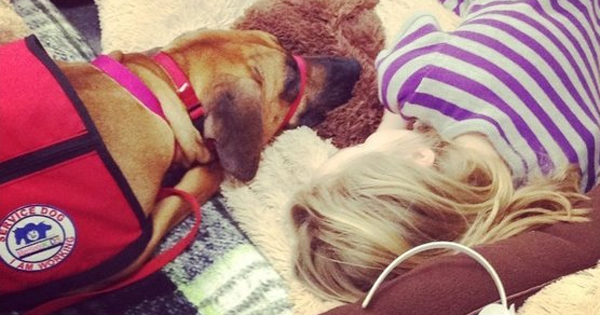Service dogs work in hospitals, on military bases, and in schools with special needs children. The dogs visit the schools on a once-in-a-while basis. However, at The Calais School in Whippany, New Jersey, Cali is a member of the teaching team.
This 18-month Rhodesian Ridgeback is the first cortisol-sniffing dog on staff at a school. Cortisol is known as the “stress hormone,” and people on the Autism spectrum tend to have higher levels of cortisol in their blood.
Cali is employed to detect rising cortisol levels in the students. She waits outside of school each morning as the students file by. If she notices anyone with a high level of cortisol in their blood, she will signal to her handler, Casey Butler, a health teacher on staff at The Calais School who is a certified specialist in natural canine behavior rehabilitation and in animal adaptive therapy.
When Cali stares at a child, Butler knows that is the signal. She then takes that child aside and works with him or her before a meltdown occurs. “The children listen to Cali,” she says. “They trust her.”
When Butler talks to the children, she tells them that “Cali told me” or “Cali said.”
Butler told the New York Times that “They listen to her because Cali is nonthreatening, and they like being around her.”
A ninth grader agreed. “Cali can help us cope with our problems so that we don’t have to get through it by ourselves,” she said. “She is loving, intuitive and goofy.”
Dr. Nick Dodman from the Center for Canine Behavior Studies explained that Cali uses smell receptors in her nose to detect cortisol. “Canines can detect rising cortisol levels in our sweat or breath,” he says. “Humans have 12 million smell receptors in their nose. At the lowest estimate, dogs have 800 million smell receptors.”









